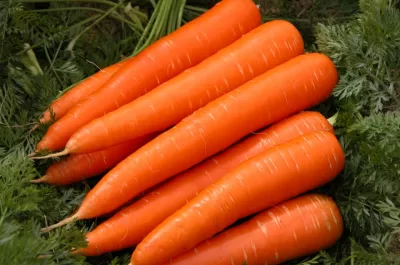Can Agriculture Kick Its Plastic Addiction?
©https://civileats.com/2023/12/04/can-agriculture-kick-its-plastic-addiction/
Posted: DECEMBER 4, 2023
Posted By: NAOKI NITTA
While the plastics used at every step of the farming process can boost productivity, they also pollute the soil and the food we eat. New research has farmers and advocates pushing for change.
Plastics are tightly woven into the fabric of modern agriculture. Black polyethylene “mulch film” gets tucked snugly around crop rows, clear plastic sheeting covers hoop houses, and most farmers use plastic seed trays, irrigation tubes, and fertilizer bags.
These synthetic polymer products have often been used to help boost yields up to 60 percent and make water and pesticide use more efficient. In China, for example, research shows that plastic field covers keep the soil warm and wet in a way that boosts productivity considerably; an additional 15,000 square miles of arable land—an area about the size of Switzerland—would be required to produce the same amount of food.
But plasticulture, or the use of plastic products in agriculture, also comes with a wide range of known problems. Plastic contaminates fields at a much greater scale than it does our oceans, posing an acute threat to soil health and food security. Research shows that as the chemicals from degrading debris leach into the soil, their persistence decreases crop productivity while snaking up the food chain, appearing in earthworm guts and even human placentas.
In the larger scope, agriculture accounts for a small slice of the plastics pie—less than 3 percent of the annual 440 million tons produced worldwide. Yet their pervasive use—along with farmland, plastics cover everything from individual seeds to bales of hay and packaged produce—has allowed them to plant themselves deeply in our food supply. “Relatively speaking, it’s a small volume,” says Philip Demokritou, vice chair of Rutgers University’s environmental occupational health and justice department and author of a recent international report on plastics in agriculture. “But it carries the highest risks.”
Given the challenges of feeding a ballooning global population, curtailing our dependence on plastics to grow food is a daunting proposition. Simply put, “there are no magic solutions,” says Demokritou. Mitigation requires slashing production and consumption, he adds, and increasing recycling and reuse all along the supply chain.
From implementing policies, incentives, and regulations to engaging producers, farmers, and consumers, it’s an all-encompassing effort that “we need to battle collectively as a society,” he says. And yet considering the impacts to both environmental and human health, investing in comprehensive, innovative, and proactive measures will be far more cost-effective, Demokritou suggests, “than feeding disease and disasters down the line.”
Polluting the Food Chain
The world has a voracious appetite for plastic. The Organization for Economic Cooperation and Development (OECD) estimates that global plastic waste is on track to nearly triple by 2060. With less than a fifth of the end stream getting recycled, single-use products make up the bulk of the waste, and it’s destined to go to landfills, be incinerated, or escape into the larger environment.
Meanwhile, 98 percent of disposables are made from “virgin” feedstock, driving renewed growth for fossil fuel companies that supply the raw material. All told, annual greenhouse gases released from plastic production, landfilling, and incineration total 850 million tons, or 4.5 percent of global emissions. And studies also show that plastic pollution disproportionately affects disadvantaged communities.
Nevertheless, the versatility, affordability, and convenience of synthetic polymers make them indispensable to most industries, including agriculture. The field consumes 14 million tons of plastics every year, with crop and livestock production accounting for 80 percent.
In 2021, the United Nations (U.N.) Food and Agriculture Organization (FAO) issued a report highlighting the urgent need for more sustainable use of agricultural plastics. The landmark assessment subsequently paved the way for the U.N. to push for a global treaty to slash plastic pollution.
According to FAO, plastic films such as black mulch and greenhouse covers account for the bulk of annual global use, at more than 8 million tons. In addition to extending the growing season by warming the soil, safeguarding plants’ roots, and preserving soil moisture, these plastics also suppress weeds.
The drawbacks, however, are just as consequential. Plastic mulch creates an impervious surface that concentrates chemical runoff while overheating fields and impacting soil health. And the single-use product is neither recyclable nor reusable, requiring seasonal retrieval and disposal. The Rodale Institute, a nonprofit research institution for organic farming, cites that every acre of land farmed with plastic mulch creates upwards of 120 pounds of waste that typically end up in landfill, or otherwise break down into the soil or nearby watersheds.
In China, where farms use enough plastic film to cover the surface area of Idaho every year, the difficulty of end-of-season removal led growers, at one point, to plow the plastic directly into the field. The widespread practice, which took place through the late aughts, “had a deleterious effect on soil quality,” says Richard H. Thompson, a former agricultural plastics sustainability expert at FAO and a lead author of the 2021 report. As contamination rose, crop yields fell by 15 percent.
That practice was banned, but plastics have continued to disintegrate and leave an unavoidable trail of debris and impacts—wherever they’re used. “It takes about 10,000 chemicals to produce plastics,” says Rutgers’ Demokritou, noting that the additives are necessary to give polymers flexibility and other functionality.
As they fragment under sunlight, temperature fluctuations, and wear and tear, the micro- and nanoplastic (MNP) particles remain chemically stable even as they physically decompose. Accumulating in soils over time, the residues hinder water absorption and impact microbial communities. Eventually, MNPs “pollute the food chain,” Demokritou says, posing health risks such as disrupting endocrine and digestive functions and harboring drug-resistant superbugs.
Driving Coordinated Action
In the past decade, the massive reliance on plastic mulch has spurred the development of greener alternatives employable on an equivalent scale. Several agrochemical companies have developed biodegradable plastic mulches (BDMs) that, while doubly expensive, relieve farmers of the cost and labor of removal by decomposing into the soil.
Yet independent studies on their long-term impacts to both soil health and crop productivity remain inconclusive. To give them the requisite plasticity, BDMs contain many similar additives as those found in conventional films, says Thompson, “so the jury is still out.”




